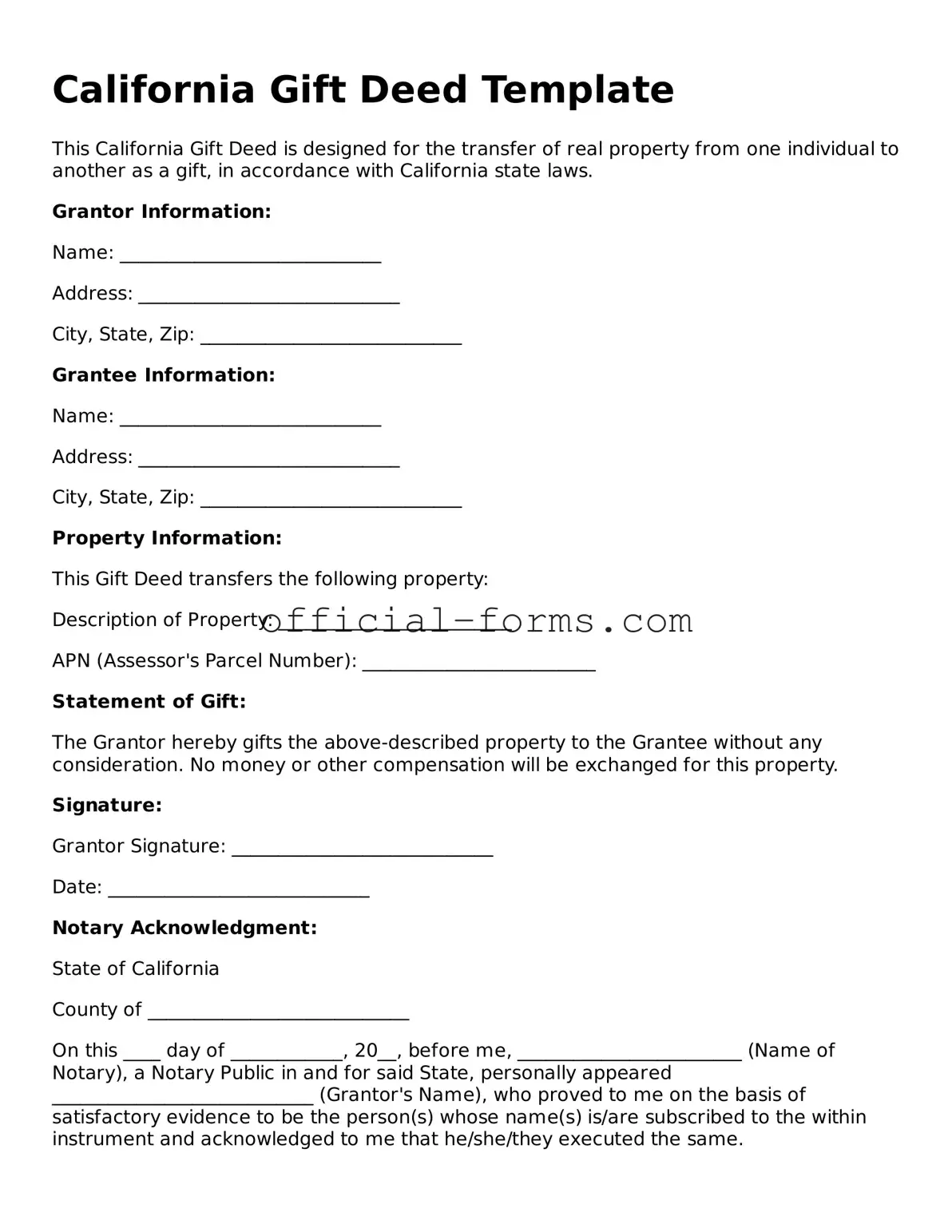Official California Gift Deed Document
A California Gift Deed form is a legal document that allows an individual to transfer property ownership to another person without any exchange of money. This form is particularly useful for those wishing to give real estate as a gift, ensuring that the transfer is documented and recognized by the state. Understanding how to properly utilize this form can simplify the process of gifting property and help avoid potential disputes in the future.
Open My Gift Deed Now
